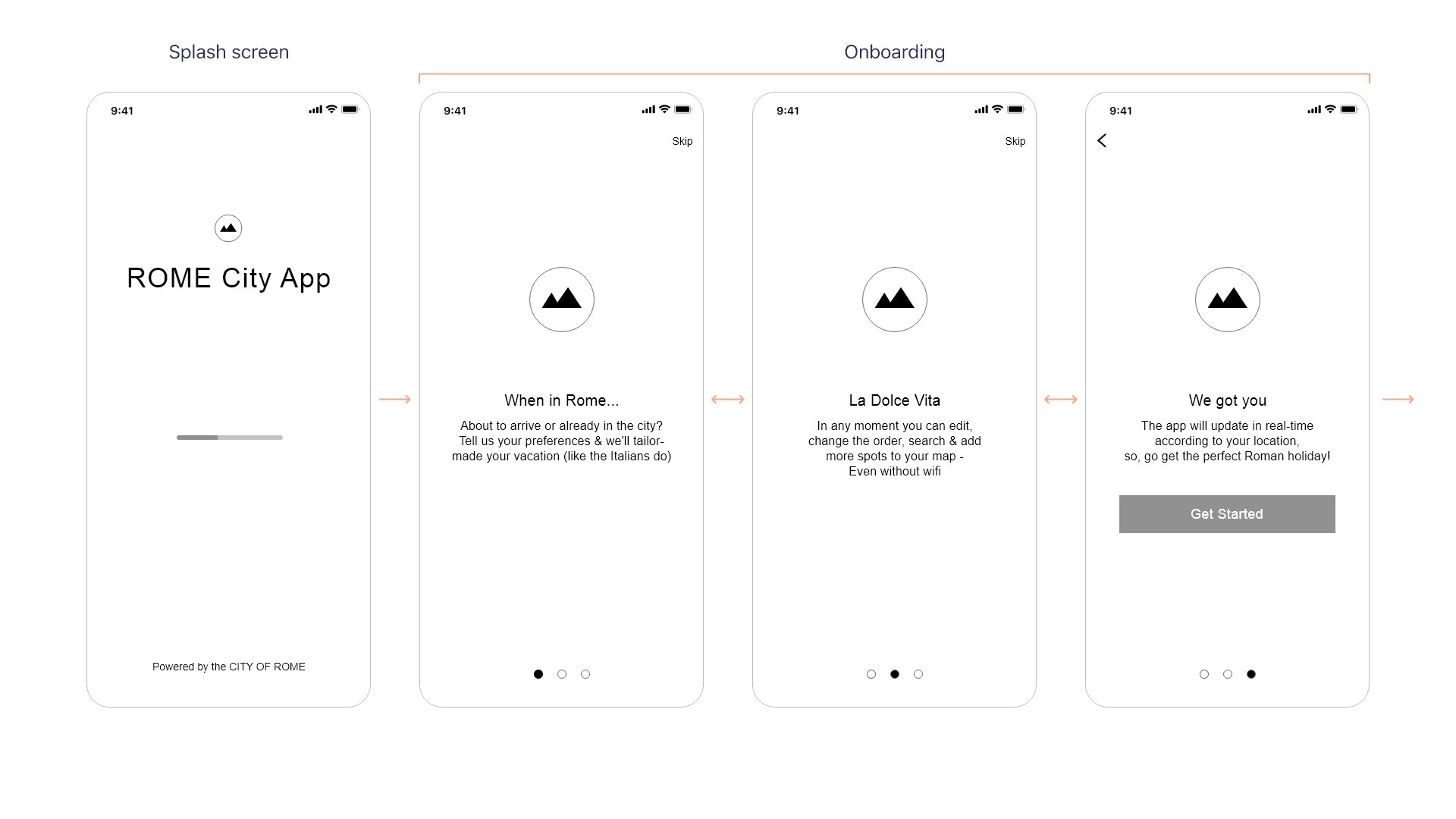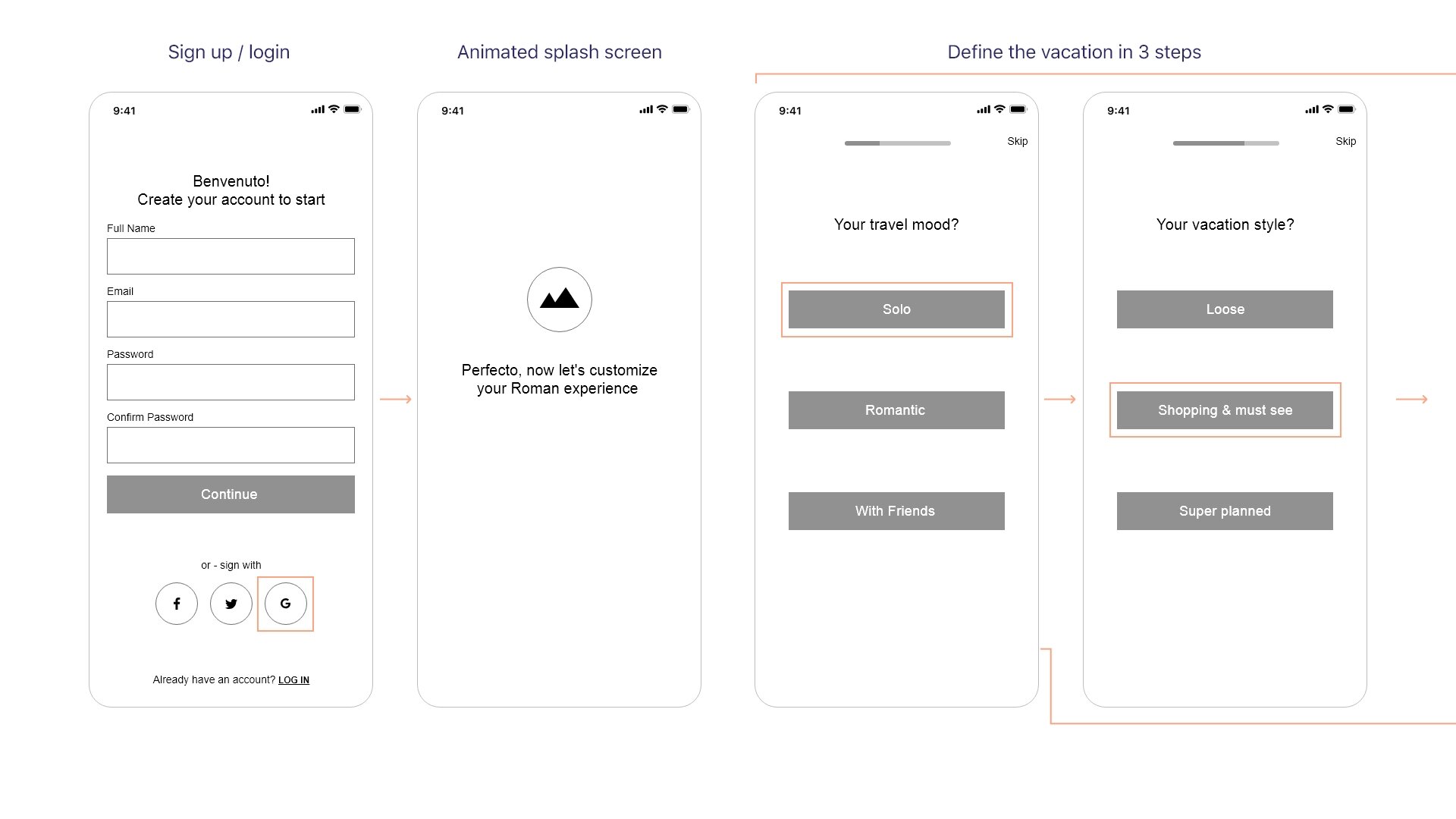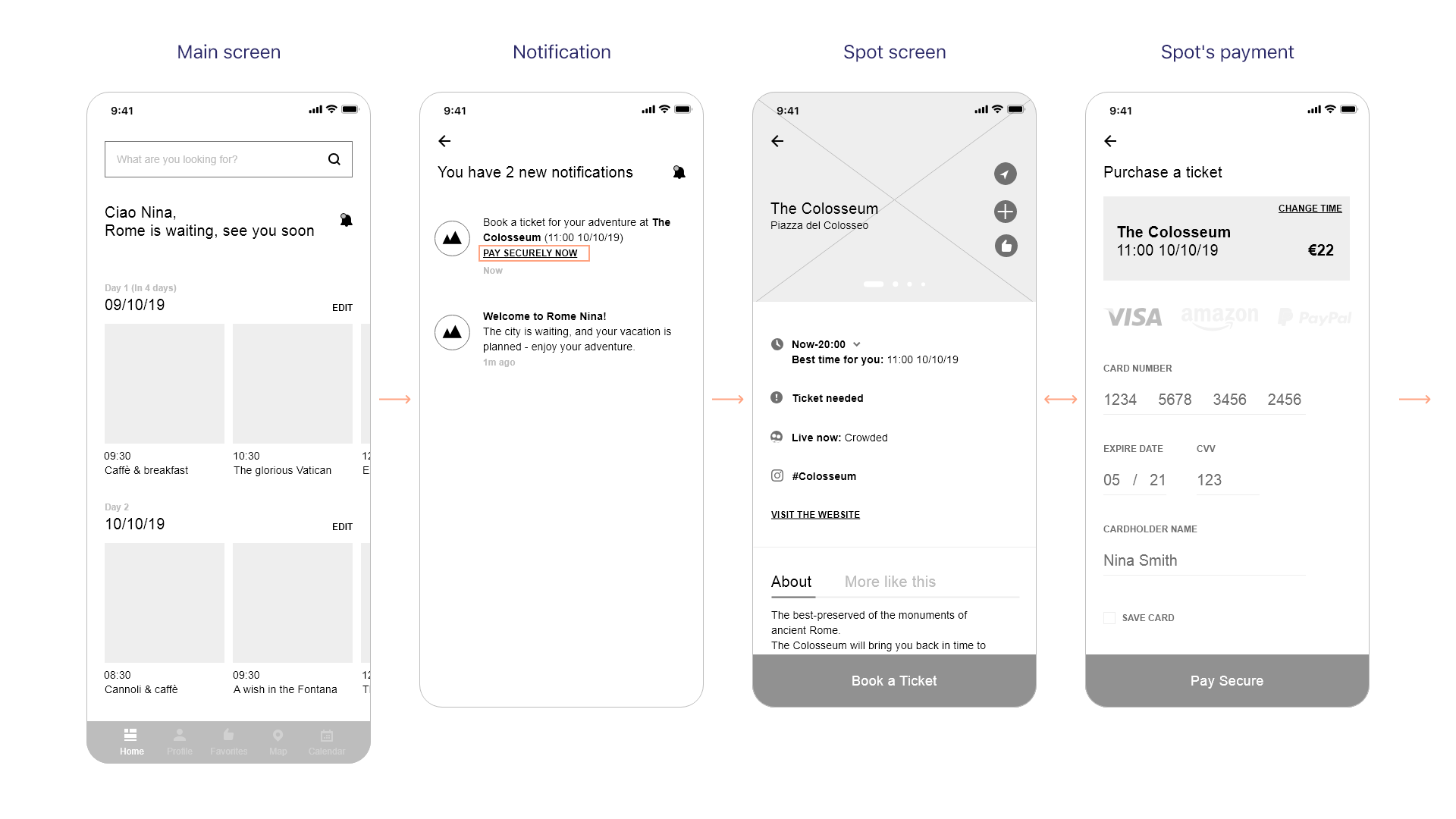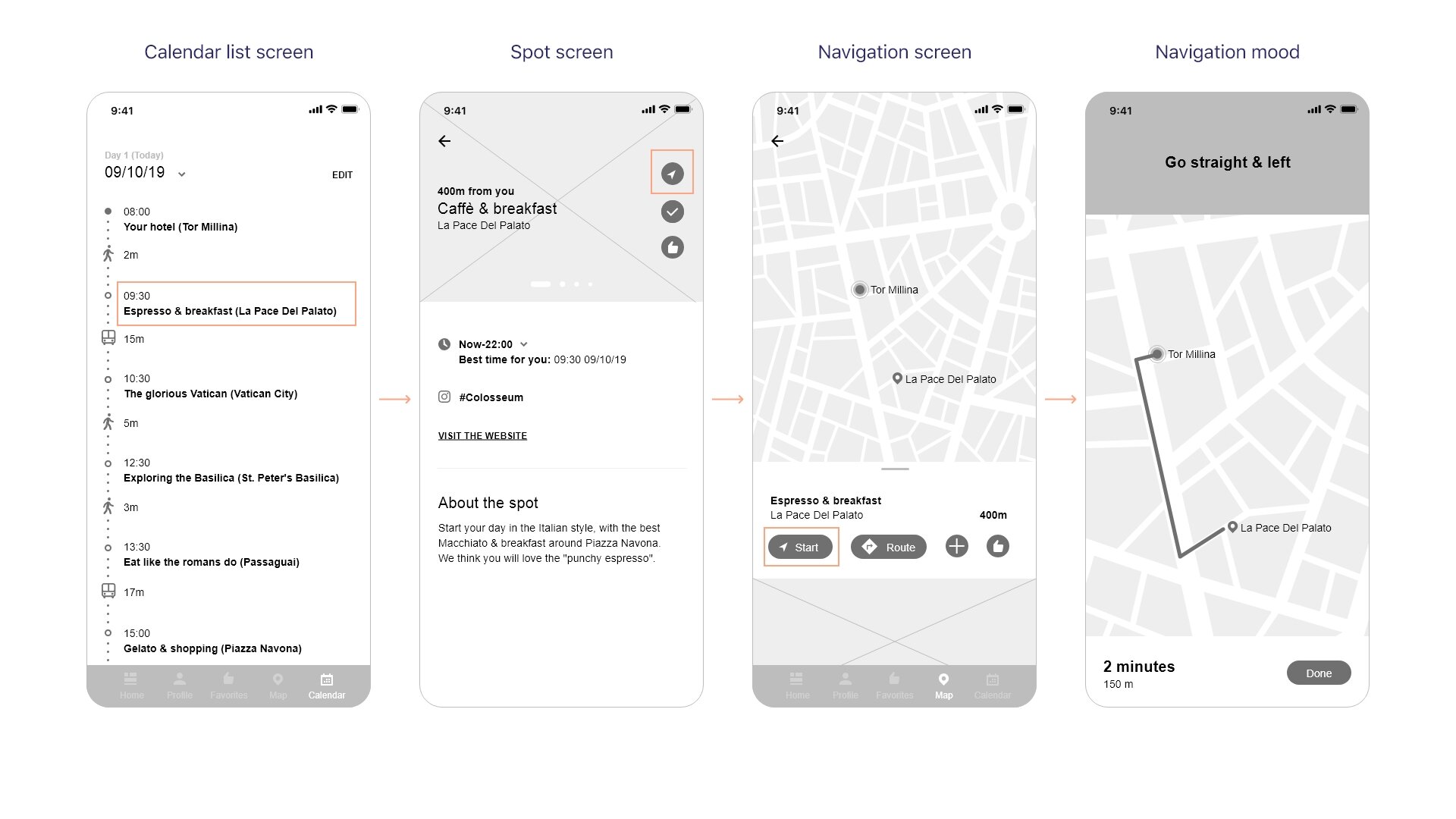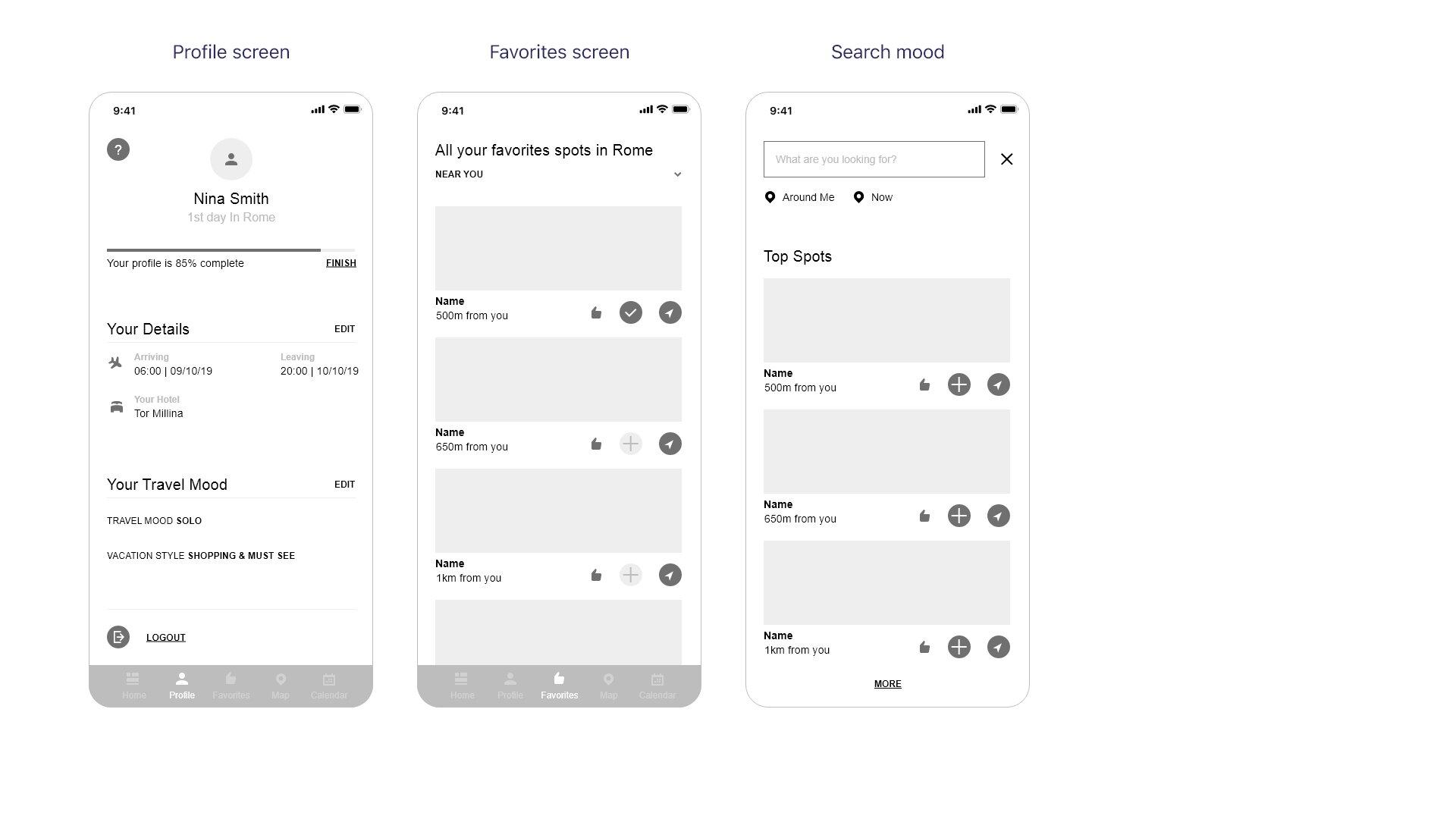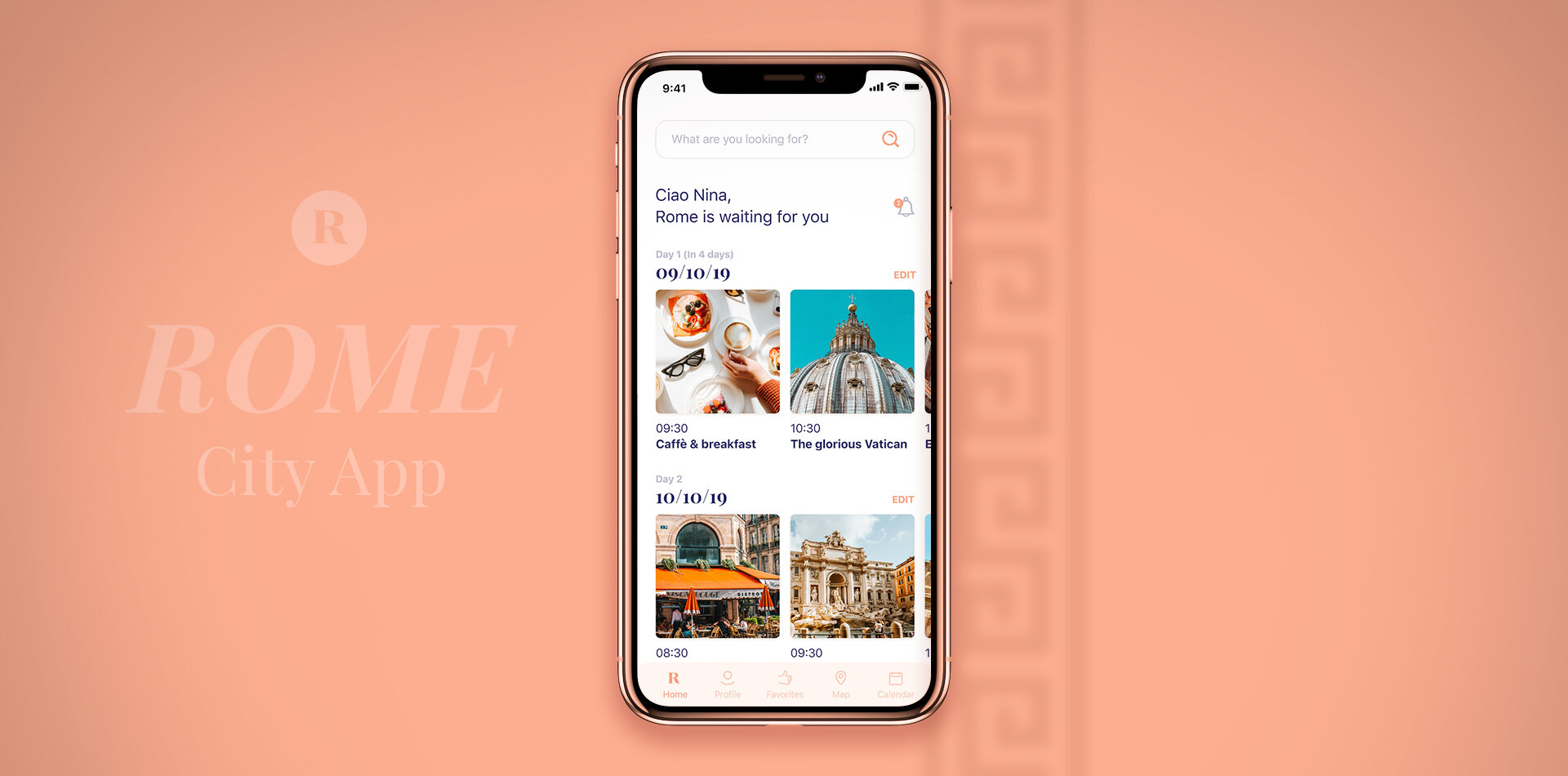Case Study
Interactive vacation planner that aims to solve over-tourism in the city
Role
UX Strategy, Research, UX/UI Design, Micro-copy
Year
November, 2019
The Challenge
Around 10 million tourists visit Rome every year.
The fabulous city suffers from over-tourism & overcrowding, especially around historic monuments, and in the peak summer season.
This huge number of tourists in a relatively small city center, where residents already live and work, is causing a deterioration of the environment and, some would say, a negative experience for the tourists.
The Audience
Many of those tourists are young, individual Millennials, who travel alone or in small groups.
Millennials represent the largest generation to date. With an estimated $200 billion of spending power, certainly a compelling financial reason to pay attention to them for travel companies.
They are reshaping how travel works by focusing on experiences and culture, solo travel, planning their own itineraries, ignoring cheap stock content and drawing their decision and influence from social media or user-generated content. Always searching for those Instagram worthy moments. All of these new travel trends are done directly on their smartphone, from research to booking.
During my research I came across some very interesting statistics, regarding this demographic:
This data emphasized the desire for a product that could customize your vacation - based on your needs & personality.
Research
So I started to explore what are the technologies in the travel industry that help achieve that personalized experience.
AI In Travel
Over the years, travel planning and booking has changed a lot. With websites and platforms like Kayak, Google Travel and Airbnb finding the best destinations, routes and prices are just a few clicks away. Now, thanks to developing technology like artificial intelligence (AI) and machine learning (ML), planning vacations is becoming even easier.
Deloitte’s consumer-review has found that today’s consumers are starting to expect personalization and removal of friction throughout the travel booking process.
Here are few of the startups making it come all together:
Mezi.
Mobile app that acts like a personal travel assistant and travel concierge using chatbots and travel dashboards to provide end-to-end booking service and data insight.
The downside is, that this app doesn't support navigation in real-time.
Hipmunk.
Hipmunk helps travelers find the right transportation options and hotels bookings for the lowest prices. Hipmunk’s travel assistant, Hello Hipmunk, provides even more travel support with question-answering capabilities in Facebook Messenger and Slack. Hipmunk then analyzes its data-sets to provide relevant advice.
Utrip.
A personalization and AI recommendation platform designed for the travel industry. It takes in user data like interests, budgets and must-see places, sorts through countless destinations and recommends the most relevant and personalized travel options. The platform also partners with airlines, hotels, cruise lines, destination marketing organizations and visitor bureaus to help engage with travelers and boost booking numbers.
Hopper.
Hopper is helping travelers get a head start and forecast prices for different seasons with its dynamic pricing-powered mobile app. The app monitors the trip’s dates, suggests alternative dates that offer better pricing, and alerts users of price changes.
Those solution focusing on the pre-arrival stage, saving a lot of time on research, but not so helpful on the actual vacation.
Key Insight
There is a big over-tourism problem in Rome. I choose to focus on the Millennials demographic that visit the city, during my research I identified the main pain points and the need for PERSONALIZATION.
After exploring this need, and existing solutions I decided to use this need & those solutions to solve the over-tourism problem.
The Solution
A mobile app, operated by the City of Rome, that create the perfect vacation and guide the user through it. In other words - A custom made roman experience.
The user will enjoy all the best that Rome have to offer - In a way that won't overload the city.
Using AI & ML technologies, this app will consider the tourists needs in real-time, and plan for them a full schedule, for the entire vacation. At the same time it will degrade the volumes of visitors.
This app will combine it all together: the flights, the hotel, even the ride from the airport, and of course the vacation route. Also, the user use it before and during the vacation for a smooth experience (navigation, transportation, real-time recommendations etc.)
*This app is dedicated for the beautiful city of Rome but could work for any other city.
The Process
The Persona
Nina Smith
A 28 years old Data analyst. Working on a successful medical startup, partly from from home.
Travel to Rome for a professional conference, and after that she will have free 48 hours in the city. Nina travel on a business trip 2-3 times a year, mainly for conferences.
28 years old
Data analyst
Single, no children
Lives in San-Francisco
Upper-middle income level
Goals & Needs
Before her trip she try to do a research, so she could maximize her staying in the city. Too cool for organized tour.
Always searching for those Instagram worthy moments. Want to avoid the tourists trap. Looking for a unique experience, but also visit the must see places
pain points
She's getting frustrated from all of the information & the research - mainly because the lack of time and she’s starting to feel the FOMO.
Relevant Patterns of Behavior
Always carry her iphone with her, using it for work needs but also for constantly sharing on social media.
Really into lifestyle blogs, always searching for unique experiences and willing to spend money on it.
She takes every opportunity she has to travel, especially on her business trip.
User Journey
The user journey starts way before the user arrive to the city. This app allow to minimize the preparation and research time - in order to maximize the experience in the city.
This is a Nina’s journey with & without the app:
User Flow & Key Features
After defined the primary pathways our persona would explore through the app, I created a general flow. The main screen has been designed to allow users a quick access to the spots and to serve as a overview of the vacation plans.
Spots are the destinations and sites the user will visit or plan to visit during the vacation.
After mapping the app screens & features I decided to create hi-fi wireframes.
Wireframes
Onboarding & Registration
The login and setting up the preferences are essential part of the app usage experience. Allowing the app to learn the variables in order to customize the best vacation for the user.
4 days before her vacation Nina signed up for the app via google, she choose her preferences and got initial vacation plan, which she can edit in any time.
Purchase Flow
Nina get a notification that offers to buy a ticket in advance to one of the spots she will visit.
She perform a secure purchase within the app, and got a bar-code to show at the spot.
Navigation & Additional Screens
In Rome, after her free time started, Nina view her plan for the first day. She navigate to the first spot using the in-app map.
UI Design
Warm yet clean, with a personal touch that reflects in the illustrations and in the micro-copy.
Precise visuals choices for the target audience, and some references of the Roman culture.
Onboarding
First interaction with the app, expose the abilities and the features.
Registration
This information build the first vacation plan that will improve & learn the user over time
Main Screen
This screen provide an overview of the entire vacation. Organized in a clear, chronological visual way, introducing each day activities & spots.
There is an editing possibility- the user can remove spots or change the order.
The plan keep update according to the user location.
Purchase Flow
Some spots require tickets, so, in addition to the informational details, the user could purchase ticket in advance.
Navigation Flow
To navigate among the spots the user could use the app’s map.
The path updated in real time - no WiFi needed
Notifications
The app keep learning the user on the go, asking question for better results, suggest tips and inform about nearby spots.
If you’re interested - view the prototype here
Reflection
Measure Success
In order to understand if my solution was right & applicable, I needed to see if there are ways to measure success. Here are the main ones:
Reduction in over-tourism - If we could see some changes in the overload cause by the app, this would be a huge success.
Vacation plan completion rate - If the users will complete the vacation according to the plan.
In app purchases rate - The amount of users buying tickets, flights and reserve hotels via the app.
Additional Features
Since this is a large scale product, I tried to address most of the aspects but i’m well aware to the fact that there is room for some more adjustments, solutions, features and of course thinking.
After the final product is finished, there’s a place for some thoughts:
Since millennials are an idealistic, altruistic generation, who is passionate about social causes that benefit the greater good, I think there can be more place to highlight the agenda behind the app in the design strategy - let it take a greater part. It could create higher engagement among this audience.
Also, there are some additions I thought could be further developed in the future:
Like vacation budget management, integration with Spotify or Apple music for the right playlist, steps counter for those who like to stay fit, and even an Uber integration for easier transportation.
Those features and more could really meet all of the users needs & take his vacation to the next level.
Final Thoughts
Working on this project was very educational for me. Developing all aspects of the product was challenging yet satisfying, allowing me to fully experience the design process.
I truly believe this app could work for any city facing the over-tourism, and who know? maybe one day it will ☺










